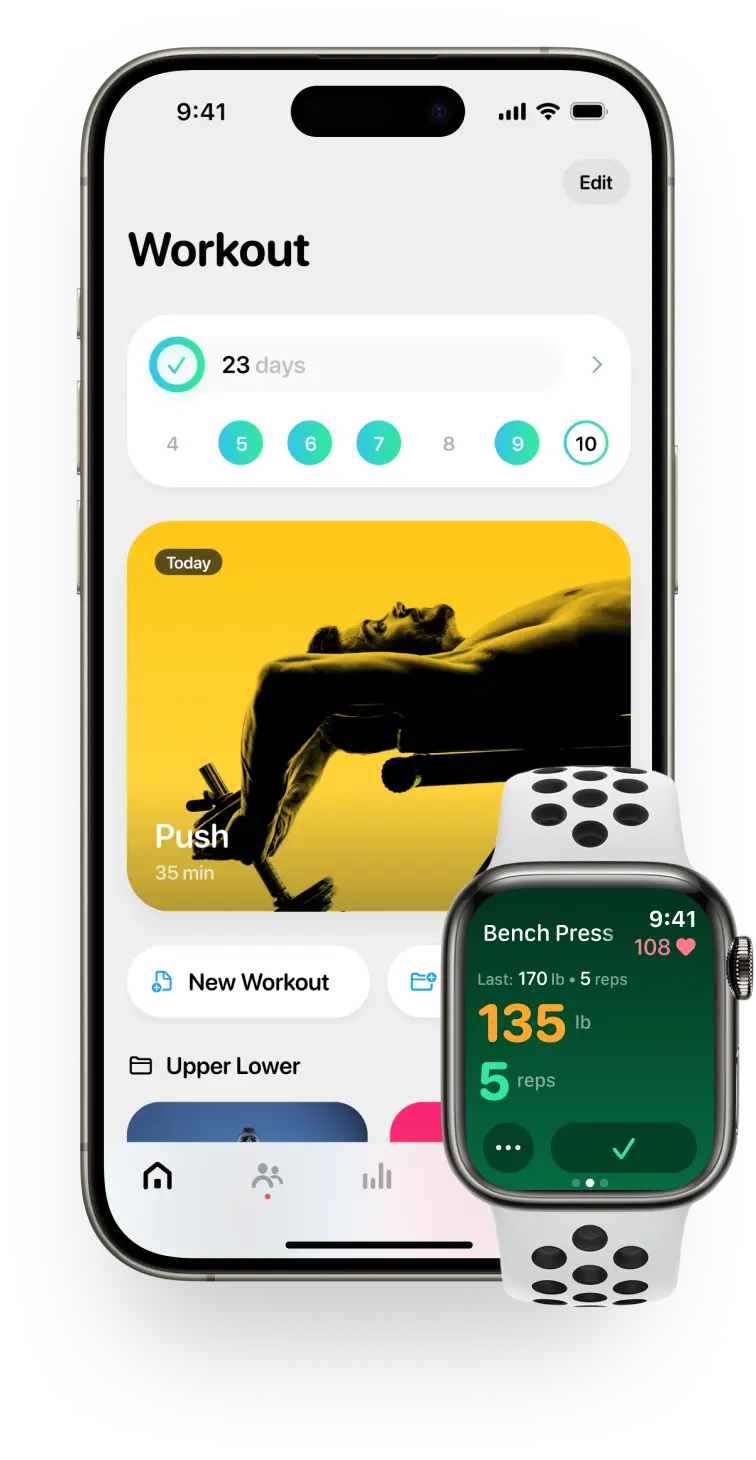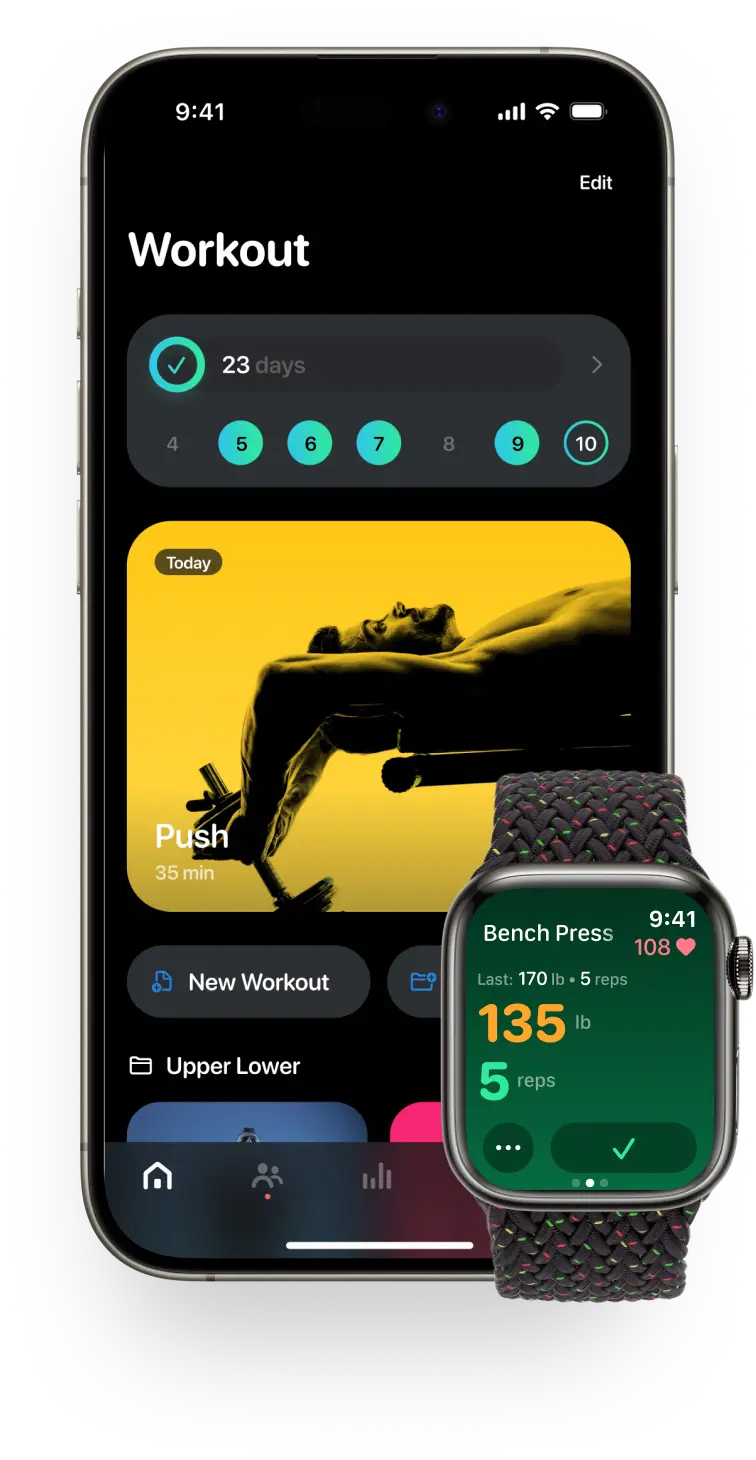Why Am I Too Lazy to Workout
Are you bored or feeling lazy during your workouts? Get to know techniques to boost your motivation. Find inspiring ways to workout.

Have your workouts worked you into a gym rut? Do you feel too lazy to work out? Tackle your lack of motivation if laziness toward working out has you stressed.
We all know what a lifting plateau feels like. But perhaps you’ve hit a motivational plateau. Lack of inspiration happens to the best of us.
Whether you work out because you want to, or because you feel you have to, taking a little gym break can be beneficial. It lets you get your motivation back and take some personal time. This can be a much-needed change.
Did you know the driving factors behind why you exercise can impact your workout length and frequency?
How Does Workout Motivation Work?
We can break motivation for exercise down into two big categories: intrinsic motivation and extrinsic motivation. If you are intrinsically motivated, that means you work out purely for the love of it.
On the other hand, extrinsic motivation comes with some promise of reward. Think money, social clout, or the physical pleasure of having a body that looks good.
Extrinsic motivation breaks down even further into identified regulation and integrated regulation.
Science of Motivation
Identified regulation is when you are motivated based on conscious personal values. Integrated regulation means a value is so important to you that it starts to become tied to your sense of self.
In a study, integrated regulation was found to be the only type of motivation linked to how long you’ll exercise. So for productive workouts, it may be important to think of being physically active as part of your identity.
Hopefully, this is a feeling you’ll start to relate to when you think about being in the gym!

That being said, it can be hard to feel positive about working out if you’ve got other distracting factors like work, personal issues, or stress that take you out of the zone and make you feel too lazy to work out.
Too much time out of the gym can seriously put a damper on all the efforts you’ve gone through to make gains.
If you’re wondering “Why am I so lazy to work out?” or feeling unmotivated in your exercise routine, look no further.
We’ve broken down 9 simple strategies you can try if you’re feeling too lazy to make it to the gym or uninspired during your workouts.
Let’s explore how you can implement these tips into your workout routine.

Call a Friend
First off, working out with a buddy can make a daunting exercise feel more fun. Try getting in touch with one friend or a group of friends for a group workout.
This helps you hold yourself and each other accountable.
Friends can make even long and tedious workouts feel simpler. There is evidence to show that in older adults, at least, exercising with others can provide social, psychological, and physiological benefits.
Teamwork Motivation
If you’re struggling to perform a challenging new move as well, a friend can serve as your biggest cheerleader during a workout.
Your friends should be there to support you, whether at school, in your career, or the gym. Work out with a friend and try turning dreaded gym days into a bonding exercise.
And hey, most people in the gym have the same hobby you do (exercise). Get to know a few familiar faces that you see every time you work out.
You may find some new people to connect with that can help inspire you to show up and be consistent with your workouts.

Change it Up
Do you find your gym sessions are getting boring? Sometimes repeating the same moves day in and day out can simply lack mental stimulation.
Although it’s important to work on progressive overload in key moves like your squats, deadlifts, and bench presses to work on muscular hypertrophy, sometimes too much of one thing feels dull.
Let’s look at a method that exposes your body and mind to new workout types to keep you stimulated.
Cross-Training
For most people other than high-level athletes who need to keep focus on one sport, cross-training, is beneficial to overall fitness and can help you reduce the risk of repetitive strains from repeating the same exercises too often.
This is where you train in a variety of sports or workout types to increase performance. Usually, you cross-train for a particular sport. That being said, there’s no reason you can’t apply this technique to your mental endurance as well as your conditioning.
Are there ways you can make your workouts feel creative? Consider alternate types of workouts. Can you work the same big muscle groups as lifts, but using different techniques?
Calisthenics, for example, is one method gaining popularity. This bodyweight-only workout style lets you get equipment-free workouts in the gym. Or you can go outside and use just what’s available in your outside environment.
It may also make things more fun! The change can motivate you to work past your laziness.
If you’re interested in calisthenics, check out Muscle-Up Progression and Planche Progression. We’ve also explored the calisthenics-based workout program of ex-NFL star Herschel Walker.
Get to know what performing thousands of push-ups and sit-ups can do for your body.
Switch the Scenery
For another tip, if you find yourself always struggling with the same mental blocks when you step into the gym, a change of environment may help.
Many of the same exercises you do at the gym can be taken outside. There’s no reason you can’t work out from an alternative location.
Think the moves you’re doing are equipment-heavy?
Many common gym moves like band tricep extension, banded lateral raises, and calisthenics can all be done outside. It’s easy to take your favorite workouts outside the gym. The fresh air just might give you a fresh perspective.
What’s better is that even with modifications or performed with bands instead of weights, you can still track your progress outside the gym.
Stay Lowkey
Let’s face it, some days, no matter what you do, you’re just too lazy to work out. This is understandable and happens to the best of us.
Sometimes psychological barriers are what stop you.
If you’re feeling off, try a simple walk outside. It may not feel like the powerful workout you had hoped for. That being said, it still beats nothing.
Planned for a leg day? Sometimes just showing up at the gym and doing a stepmill walk can give you a bit of a burn.
Rather than hurting yourself by going heavy on the squat rack when your mind is unfocused, choose a less technical move, where you can put your mind on autopilot for a bit.
Coach Bryan Fitzsimmons highlights some lowkey strategies for easing back into workouts if you’ve been skipping the gym.
Don’t Do Things You Hate
Next up, let’s look at some wise words of inspiration:
“Insanity is doing the same thing over and over again and expecting different results.” -Albert Einstein
It seems pretty insane to continue pushing through workouts you hate just because they’re “right” or “the best way,” if you’re dreading every minute of it.
What’s stopping you from working out in the way that feels best for you? Continuing to follow workout plans you don’t enjoy just because your favorite influencer does it or strictly performing exercises you dislike purely for the “best gains” is a surefire highway to burnout.
Although certain methods are popular because they’re effective that doesn’t mean that following these patterns is the only “right way” to work out.
By doing exercises you dislike, you build resentment towards your gym routine and you’re less likely to stay consistent.
How to Select Exercises You Enjoy
Pick activities that you enjoy doing that still give you a good workout. If you love leg day, but don’t enjoy training your upper body, try to pick out a few upper body exercises you don’t mind as much and work those into your routine.
Perhaps you can even pick a full-body workout or sport that hits the upper body in sneaky ways so you don’t have to psyche yourself up to a boring chest press.
There are always cheat codes and workarounds for exercises you don’t enjoy. See how you can stretch your creativity and find exercises you know you’ll repeat even if they’re not the “right” ones.
Join a Team
For another tip: Do you find yourself repeatedly feeling unmotivated to get your workout done? Team sports can be a better way to stay accountable for exercising.
Becoming part of a sports team may be a more reasonable choice for you if you find the motivation to work out just isn’t there for you.
Team sports create a positive environment, an element of camaraderie and healthy competition. Chances are, some of the people on your team have also gone from lazy to workout pros! Let your teammates be a source of inspiration.
Look around your city and see if any recreational league sports may interest you. Some of these are offered for free, however many do require financial commitments as well.
Write it Down
We’ve all been there: stepping into the gym and aimlessly trying to string moves together to kill time.
With no real attack plan and no valuable metrics about how your workout will benefit your gym goals, it’s easy to get sidetracked, distracted, or feel a complete lack of motivation.
That’s made even worse if you’re side by side with people who seem like experts who know what they’re doing inside out.
Chances are most serious lifters, or even those who are enthusiastic amateurs are keeping some kind of track on their progress.
Why Should I Keep a Gym Journal?
Keeping a gym journal or workout notebook can be helpful in staying on track. It lets you track progressions, remember your starting weight on a barbell, or know your one-rep max. That way you can work towards beating it.
You may want to go old school and write it down with pen and paper. This works for a lot of people in terms of breaking down exercises in a specific routine.
Where this method fails, though, is being able to see your progress move over time. An app like Flex can help you sift through your stats as you progress. See where you’re improving and where you may be plateauing.
Understanding what’s holding you back is most helpful when approaching how to fix it!
Try Coaching
Furthermore, you may need to seek out a professional to help you on your fitness journey. A qualified.
Although coaching is a great way to kickstart your fitness journey, keep in mind that personal training is expensive.
Private coaching can cost you upwards of $90 per session. Fortunately, there are more strategies available that don’t require you to break the bank, which we recommend trying before you commit to a coach.
App Tracking
Lastly, if personal training isn’t accessible for your current situation, you can always take matters into your own hands.
Many apps on the market can help you keep track of your workout progress so you’ll feel more confident and excited about the gains you’re making.
Look for an app with a “gamification” or interactive element. These can even make the most dull solo workouts feel like a good time if you’re too lazy to work out.
Although your only real competition is yourself, it’s always interesting to learn what others are doing right and to implement these techniques into your strategy.
Leaderboard or trying to beat global records can also show you what’s possible for other fitness enthusiasts and act as a source of inspiration.
Big Picture
In summary, although not every day in the gym is going to feel like a party, you certainly shouldn’t feel consistent boredom or lack of motivation.
Although it’s hard work, there’s no reason working out can’t also be fun. Stop slacking on strength training and learn to feel good and stay motivated long term.
Join the lazy to workout pipeline and use these motivational tips and tricks to get yourself back in the gym.
Furthermore, the strategies outlined above, including workouts with friends, tracking apps, and coaching are just a few methods you can use to increase your gym motivation.
Experiment and see what works best for you. If you have a tried and true method that you love, see if you can help your friends and community get inspired too.
Having a physique goal or “dream body” in mind can make your workouts more motivating. Although ultimately what you feel like is more important than looks, it doesn’t hurt to have some aesthetic inspiration if it helps you strive to be better.
Fitness Extras
If you’re curious about different types of physique aesthetics, check out our articles Greek God Workout, Butt Shapes, and Heart-Shaped Butt to learn more about body transformations.
Finally, it’s a good idea to speak with your doctor or a sports nutritionist if you are thinking about making big changes to your workout program.
A fitness professional can help you determine what is healthy and realistic for your body and fitness goals.
Inspire yourself and your community. Flex offers an all-in-one workout platform to help you learn new exercises, visualize your fitness journey, and keep all your PRs in one place.
We’ve made it simple to work on customized fitness plans. Or to introduce a little friendly competition to your fitness community by sharing exercises with your friends. Try it for free through the Flex fitness app.
References:
Duncan, L.R., Hall, C.R., Wilson, P.M. et al. Exercise motivation: a cross-sectional analysis examining its relationships with frequency, intensity, and duration of exercise. Int J Behav Nutr Phys Act 7, 7 (2010). https://doi.org/10.1186/1479-5868-7-7
Kanamori, S., Takamiya, T., Inoue, S., Kai, Y., Kawachi, I., & Kondo, K. (2016). Exercising alone versus with others and associations with subjective health status in older Japanese: The JAGES Cohort Study. Scientific reports, 6, 39151. https://doi.org/10.1038/srep39151
Ryan, R. M., & Deci, E. L. (2000). Self-determination theory and the facilitation of intrinsic motivation, social development, and well-being. The American psychologist, 55(1), 68–78. https://doi.org/10.1037//0003-066x.55.1.68
Tanaka H. (1994). Effects of cross-training. Transfer of training effects on VO2max between cycling, running and swimming. Sports medicine (Auckland, N.Z.), 18(5), 330–339. https://doi.org/10.2165/00007256-199418050-00005
Teixeira, P. J., Carraça, E. V., Markland, D., Silva, M. N., & Ryan, R. M. (2012). Exercise, physical activity, and self-determination theory: a systematic review. The international journal of behavioral nutrition and physical activity, 9, 78. https://doi.org/10.1186/1479-5868-9-78
Zamarripa, J., Castillo, I., Baños, R., Delgado, M., & Álvarez, O. (2018). Motivational Regulations Across the Stages of Change for Exercise in the General Population of Monterrey (Mexico). Frontiers in psychology, 9, 2368. https://doi.org/10.3389/fpsyg.2018.02368
Related articles
Bad Tricep Genetics? Tips to Build Strong & Defined Arms
Why Do My Knees Sound Like Rice Crispies? Popping & Crepitus
Why Do I Have Bicep Stretch Marks?


Get fit with Flex
Build muscle & lose weight fast for free.
Available on iPhone + Apple Watch




